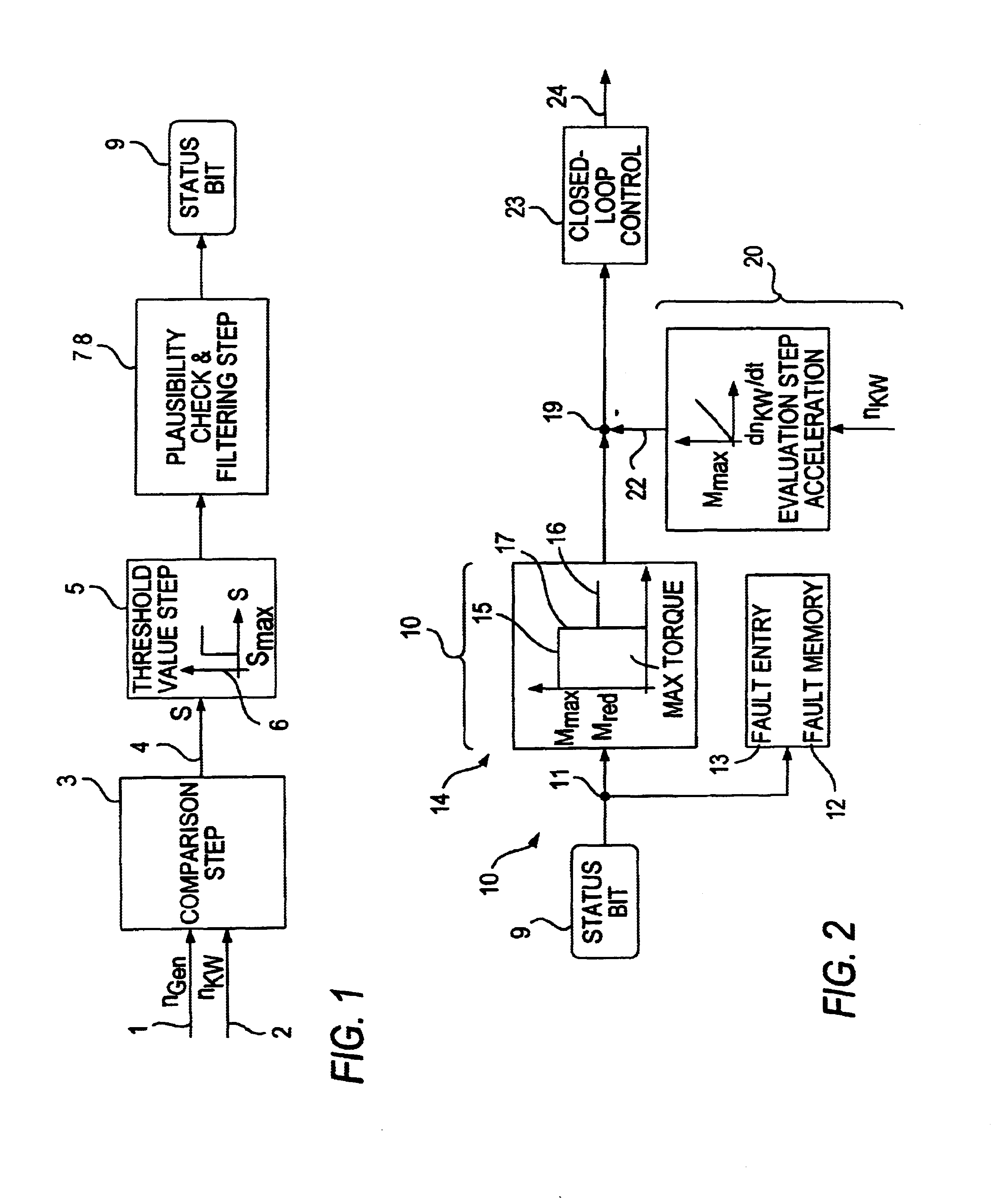Method for detecting slip in generator and starter-generator systems
- Summary
- Abstract
- Description
- Claims
- Application Information
AI Technical Summary
Benefits of technology
Problems solved by technology
Method used
Image
Examples
Embodiment Construction
[0014]FIG. 1 shows the generation of a status bit that displays the occurrence of slip and that is capable of being processed further.
[0015]As indicated in the illustration according to FIG. 1, two input variables 1, 2 are forwarded to a comparison step 3. Input variable 1 represents the rotational speed of the alternator nGen. Input variable 2 represents the instantaneous crankshaft rotational speed nKW of the internal combustion engine that drives the alternator. Input variable 2 is picked off by a communication interface of the vehicle electronics and it is picked off in cyclic fashion by a speed sensor, so that instantaneous value of the rotational speed of the internal combustion engine present at the comparison step 3 is always current. In the comparison step shown in FIG. 1 as a schematic representation only, the actual instantaneous slip value 4 s is calculated according to the relationship: (nkw·u¨-nGen)nkw·u¨=s
with ü=pulley ratio.
[0016]The output value for the instantaneou...
PUM
 Login to View More
Login to View More Abstract
Description
Claims
Application Information
 Login to View More
Login to View More - R&D
- Intellectual Property
- Life Sciences
- Materials
- Tech Scout
- Unparalleled Data Quality
- Higher Quality Content
- 60% Fewer Hallucinations
Browse by: Latest US Patents, China's latest patents, Technical Efficacy Thesaurus, Application Domain, Technology Topic, Popular Technical Reports.
© 2025 PatSnap. All rights reserved.Legal|Privacy policy|Modern Slavery Act Transparency Statement|Sitemap|About US| Contact US: help@patsnap.com



